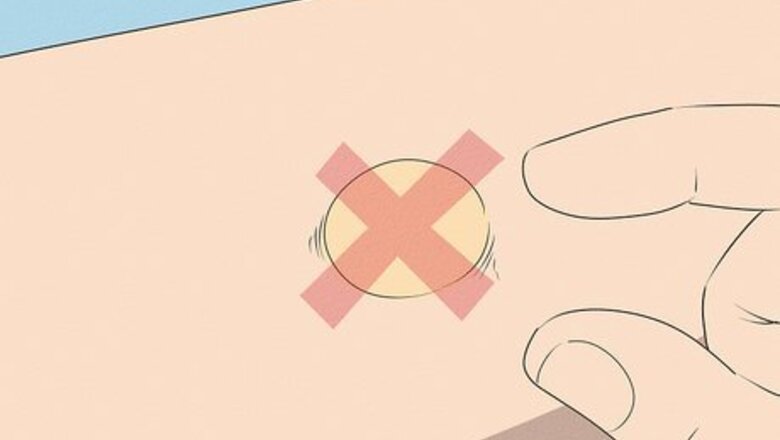
views
Is it ever a good idea to pop a blister?
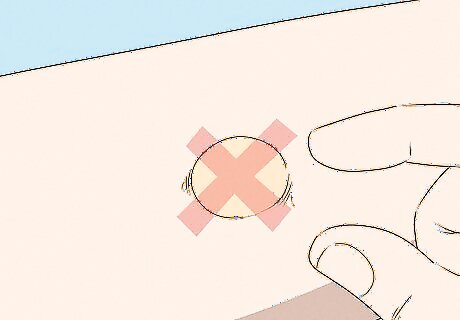
Not usually— let the blister heal naturally, instead. A blister is your body’s natural response to irritation or injury. It will go away on its own once your skin heals. Popping a blister may lead to an infection and slow the healing time, so it’s best to leave it alone. As annoying or embarrassing as it may be, rest assured that your blister isn’t going to be there forever. In most cases, it’s going to reduce in size and disappear over the course of a few days.
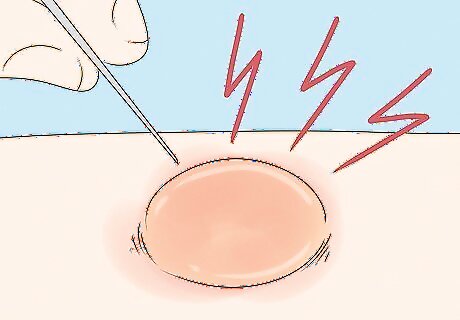
It may be okay to pop it if it’s really painful or it’s going to pop anyway. If the blister is in a location where it’s highly probable that you’re going to pop it on accident, or the blister is causing you persistent pain, popping it yourself may be the ideal option. In most cases, if you’re careful and do this safely, you can pop the blister at home. If it’s mild pain and you can live with it for a bit, you’re probably better off leaving the blister alone. If you’ve got a blister on the bottom of your foot, on your hand, or on your ankle and you can’t skip shoes or wear sandals for a few days, it’s probably going to pop anyway.
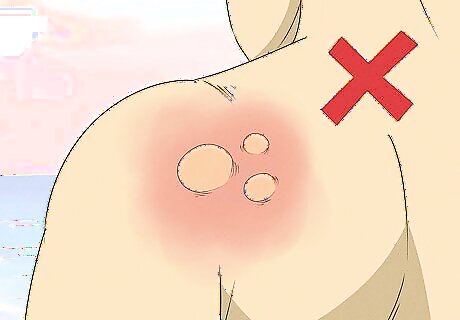
You should let a sunburn or burn blister heal naturally, even if it hurts. The one exception when it comes to popping painful blisters is with burns. If you get sunburn or you burn yourself on accident and a blister develops, do not pop it. This will only lead to more pain, and it may increase your risk of skin cancer. In the meantime (or if the blister breaks), clean the area with mild soap and water. Then, apply an antibiotic ointment and cover the skin with a nonstick gauze bandage. The same applies to burn blisters.
What precautions should I take before popping a blister?
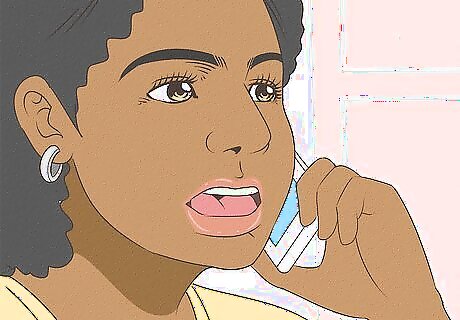
Call your doctor before you go through with it to make sure it’s safe. There are a handful of conditions where it’s usually not a good idea to pop blisters. Hemophiliacs, diabetics, and people with a compromised immune system typically shouldn’t do this, but it really depends on your personal situation. Call your primary care doctor and ask them before you break the needle out, just to be safe.
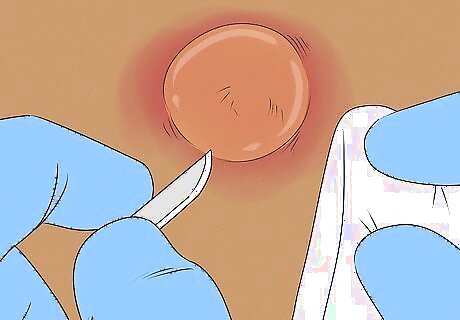
If possible, see a doctor and have them do it for you. If your doctor gives you the green light to do it at home, you can. However, it’s usually best to have a trained medical professional do this if possible. This process involves puncturing your skin with a sterilized needle, and if you don’t sterilize the needle properly or you aren’t careful with the needle, you might injure yourself.
How do I pop a blister safely?
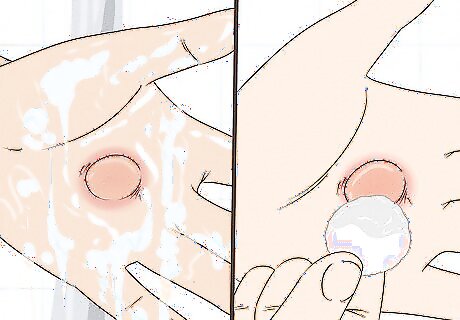
Wash your hands, clean the area, and apply iodine to the skin. Use soap and water to scrub your hands and clean the blistered skin. Pour some iodine in a sterile cotton pad and work it gently into the blister. This will reduce the odds that your popped blister becomes infected. Wash your hands and the affected skin for at least 20 seconds to ensure that it’s completely clean. You can use rubbing alcohol if you don’t have any iodine on hand.
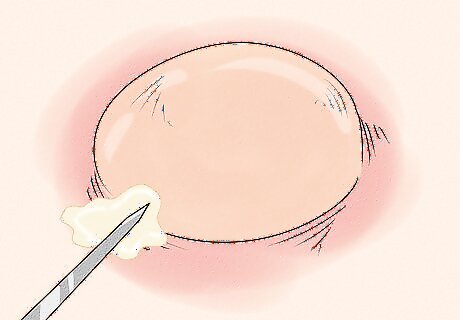
Sterilize your needle and puncture the edge of the blister. Grab a clean needle and sterilize it by wiping it down thoroughly with rubbing alcohol. Adjust your body so that the blister is visible and steady. Then, slide the needle into the blister just above the point where it meets the undamaged skin around it. Keep the tip of the needle pointed slightly away from your body to avoid puncturing yourself. Use a clean cloth or paper towel to soak up any fluid that comes out. You don’t need to push the needle all the way through the blister. Just insert the needle far enough that fluid starts coming out and then pull it out carefully. If you can’t reach the blister, you may need to enlist some help for this bit. Just make sure that whoever is helping you out has a steady hand.
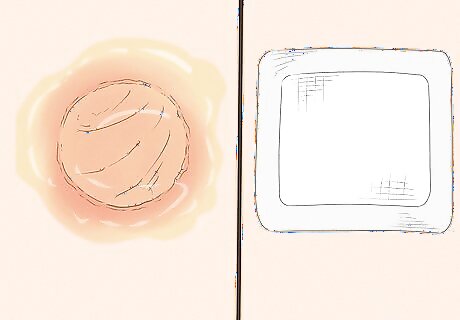
Apply petroleum jelly to the skin and cover popped blister with gauze. Once you’ve drained the fluid, do not pick or peel at the dead skin. Rinse the area off with warm water, dry it gently, and work some petroleum jelly into your skin to protect the blister while it heals. Place a sterile, nonstick gauze pad on top of the area and secure it in place with a bandage or medical tape. Check the skin every day and swap out your dressings every morning. After a few days, carefully remove the dead skin with sterilized tweezers and scissors. Then, continue to apply petroleum jelly and cover the skin until it heals completely.
Do blisters heal faster if you pop them?
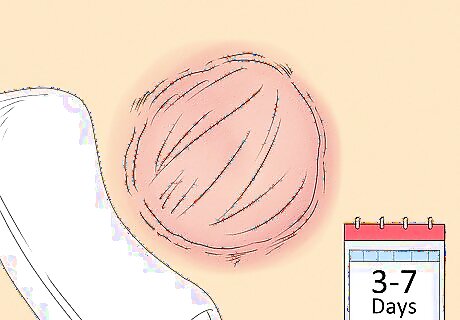
No, it’s likely going to take longer to heal if you pop it. If left alone, most blisters will heal in 3-7 days. However, it’s going to take much longer for your blister to heal if you pop it. On top of that, you’ll have to change your dressings out daily so it’s going to be a lot more work if you pop it as well. You may be able to speed up the healing process if you don’t touch the blister, you keep it uncovered, and you don’t continue the activity that caused the blister to appear in the first place. In other words, if you developed blisters after 3 days of jogging, take the week off!
How can I speed up the healing of a blister?
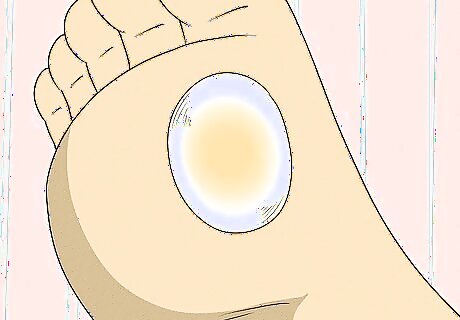
Cover the blister with a hydrocolloid dressing. A hydrocolloid dressing is a prepackaged moist bandage designed to protect damaged skin. You can pick these up at your local pharmacy, although you may need to ask the pharmacist to retrieve them for you. Simply rinse and dry your blister carefully, and then apply the adhesive bandage to your skin to cover the blister entirely. This may speed up the healing process a bit and it could reduce any pain you experience. You can leave the dressing in place for up to 5 days, which should enough time for your blister to heal. If it isn’t, swap the dressing out for a fresh one. If the dressing starts leaking or the blister pops underneath, peel it off gently, clean the blister again, and reapply the dressing.
What is the fluid in a blister?
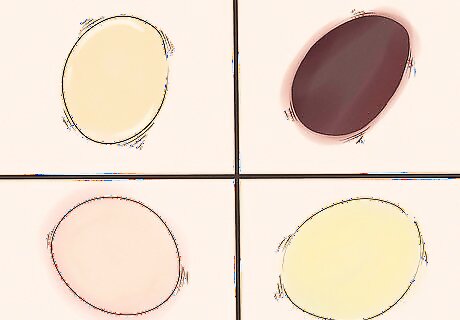
It depends on what caused it, but it’s plasma, blood, serum, or pus. The fluid that accumulates under a blister depends on where the blister is located, and what caused it in the first place. If the fluid is clear (which is usually the case) it’s serum or plasma. These liquids are released when you injure or irritate your skin. It’s just your body’s natural way of making sure further injury doesn’t occur. Blood will fill the blister if the blood vessels under the skin are damaged. Blood blisters look scary, but they aren’t uniquely dangerous. Pus-filled blisters (if the pus isn’t yellow or green) are often a sign of impetigo, a type of bacterial infection. This infection normally goes away after roughly 3 weeks, but you can see a doctor to get antibiotics if you want to put an end to the infection quickly.
How do I know if a popped blister is infected?
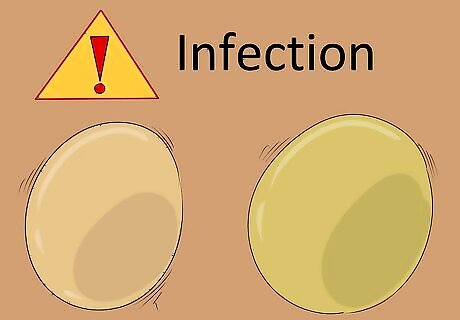
It’s probably infected if yellow or green pus comes out. Yellow or green pus is often a big sign that your blister is infected. If you think that your blister is slightly green or yellow, or you pop it and a liquid of that color comes out, go see your doctor. You really shouldn’t leave an infection of this sort untreated, and it will likely to lead to more blisters in the future if you don’t do anything.
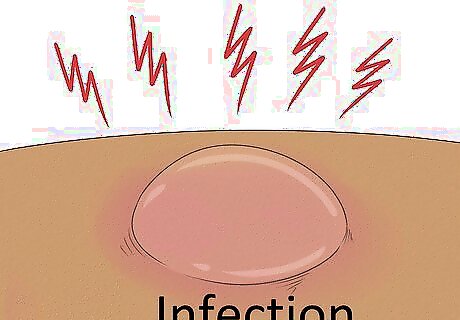
If your blister hurts or feels like it burns, it could be a sign of an infection. If the skin around your blister is uniquely painful when you aren’t putting pressure on it, or the skin feels like it burns, it might be infected. Again, it’s best if you see a doctor if this is the case. If you’re in active pain when you don’t touch the blister, get it checked out. Pain is definitely subjective, but if you’ve ever had a blister before, you should know how it feels. If anything seems off about the sensation, or the pain is unique or persistent, see a doctor just to be safe.











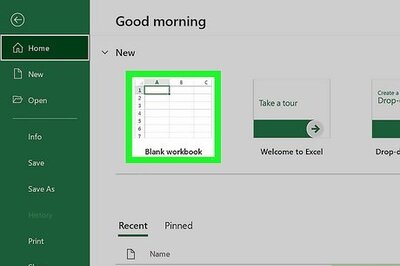
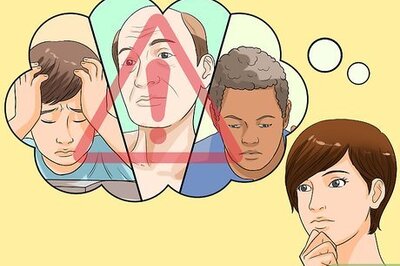
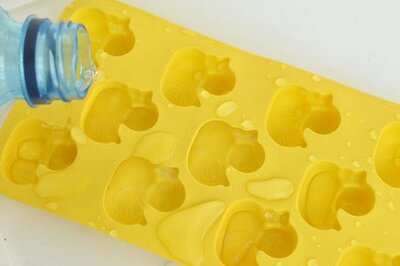
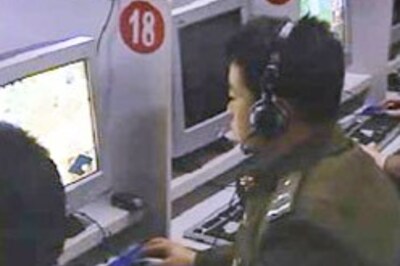

Comments
0 comment